I recently had the great pleasure of FINALLY getting to take the flagship training class from Gabe White called Pistol Shooting Solutions.
I say “finally” because I’ve been aware of Gabe White and have wanted to train with him for almost 10 years now…
I respectfully cyber-stalked him YEARS ago when I used to peruse the Pistol-Forum.com web board on a regular basis and was mightily impressed by him back then as I tried to figure out this whole “shoot better” thing…
I actually got a SMALL taste of Gabe during the recent Rangemaster Tac-Con 2024 event, where I took his 4-hour training block “Undertrained Conceal Carry Tactics”…
But, that just left me wanting more and like I said I’ve been aiming (pun intended) to take his 2-Day Pistol Shooting Solutions class for years now and finally made it happen.
The best part was, I was able to attend this training course with the entire leadership team of my Instructor Cadre from Patriot Training Center (PTC)–to include myself (the founder of PTC), Jeff Boren (Director of Training) and Carter (Head Assistant Instructor).
The weekend was filled with challenges, surprises, learning and breakthroughs…
In short, it did not disappoint and I was actually surprised because it ended up being one of the best and most profound handgun classes I’ve ever taken!
Who Is Gabe White?
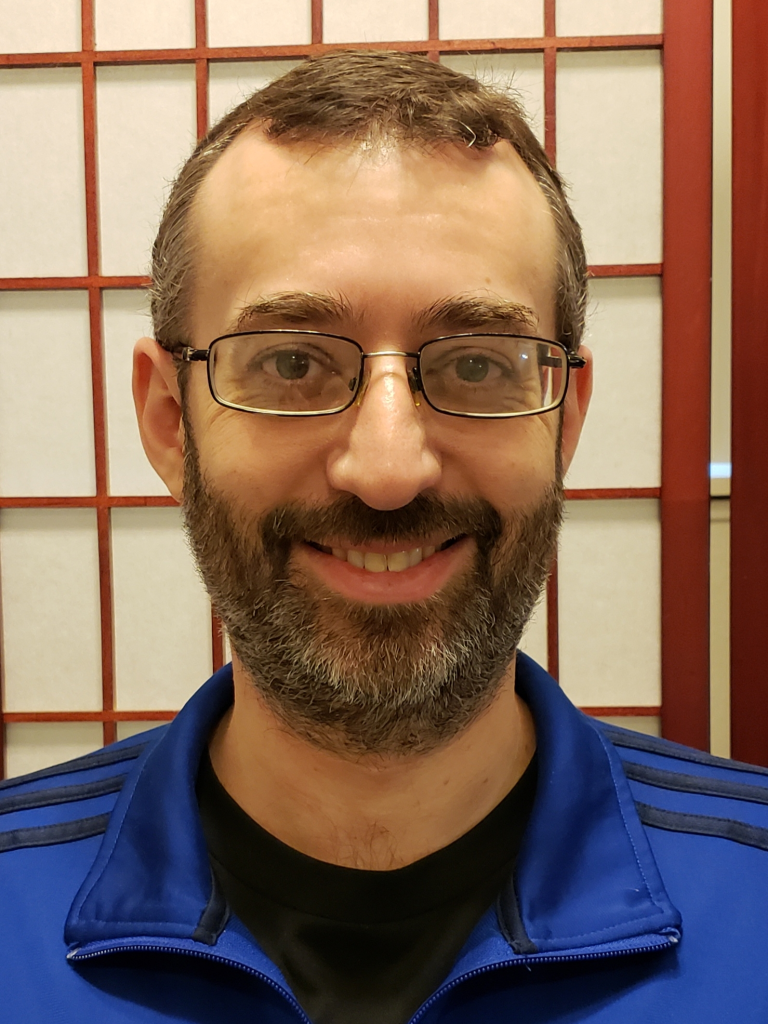
The first thing you should know about Gabe White is he is NOT a former Law Enforcement Officer (LEO) or Military (MIL) of any type…
And while he IS an accomplished competition shooter, he’s not even a National or World Champion competition shooter (that I’m aware of)…
However, I find his unique training journey to become a skilled defensive handgun practitioner very similar to my own journey…
In other words, he’s just a “regular guy” who decided to conceal carry a gun to save innocent life who believes “there is no such thing as being too good at fighting for your life with a pistol.”
And Gabe’s resume and accomplishments speak volumes about the level of skill he’s attained as a private citizen focused on high performance in concealed carry and self-defense with his actual everyday concealed carry gear and gun:
-Master class in USPSA Limited Division shooting carry gear from concealment
-Master class in GSSF
-FAST Challenge Coin Holder #09
-One of only four people worldwide to clean the Rogers Shooting School Test
-Only person worldwide to clean the Rogers Shooting School Test from concealment
That’s just a small handful of his accomplishments that I grabbed from his website…
If you know anything about the levels of consistent, on-demand performance skill needed to attain those accomplishments, then you are already impressed…
However, for me, I already knew Gabe was a great shooter, but what I REALLY got out of the training weekend was what an incredible teacher he was at translating those high levels of technical shooting skills to the paradigm of the private citizen who carries a concealed firearm for defensive use everyday.
Why I Was Completely WRONG About Gabe White’s Class!
I’ll be honest…
Gabe has a Technical Skills Test that he runs during his 2-day course, and there are levels of “pins” you can earn for shooting the test well.
The Turbo Pin is the top award, and I signed up because I REALLY wanted to earn that pin.
Part of the reason why I wanted to earn that pin is because it was a challenging “on demand” goal to accomplish–especially in an environment in front of your peers and in front of Gabe White himself…
The other big reason is because our Director of Training – Jeff Boren – earned his own Turbo Pin from Gabe the year before, and that inspired me to want to do it myself.
Here’s what’s funny though…
Jeff made an offhand comment at some point in the last year since we had discussed Gabe’s training course – it was something simple – something to the effect of “You should really take the class not just for the Turbo Pin stuff, because it’s way more than that”…
But I was so focused on earning a Turbo Pin that I didn’t fully take time to register and really appreciate what Jeff was trying to impress upon me…
Now, a few weeks after the class is over as I sit here and type this review, while reviewing my notes and thoughts over the weekend…
I think I finally got it!
And maybe I can impress that upon you too, so, let’s get into the class review!
Gabe White Pistol Shooting Solutions 2-Day Course – After Action Report (AAR)
CLASS: Pistol Shooting Solutions
DATE: September 14-15, 2024
INSTRUCTOR: Gabe White
WHERE: Private Shooting Range, outside Nashville, TN
MY EQUIPMENT: Glock 17 Gen 5 MOS with Holosun COMP red dot, Tier 1 Concealed Appendix Holster. 4 Total G17 magazines.
The name of Gabe’s course is Pistol Shooting Solutions and here’s the description from his website:
“Pistol Shooting Solutions is my premier training class, and I’m ready to bring it to you! This class isn’t for beginners – it’s intended to help established defensive handgun practitioners realize the next steps in their journey toward technical excellence to go along with the mindset, awareness, and tactics that form the foundation of self-defense with a handgun.”
The first thing to know about Gabe’s class is it is NOT intended to be a beginner’s defensive pistol class.
In fact, Gabe’s course description page lists some prerequisite skill levels for anyone who would like to take the class to include:
- At minimum, you must continuously execute the four firearms safety principles and be able to safely draw from a concealed, belt-mounted holster or unconcealed duty holster. This class is not appropriate for beginners and should not be your first training class.
- You should be able to hit a 6″x6″ target on demand at 10 yards (equivalent of the A/B zone or head of a USPSA Metric or IDPA target) and reload and clear malfunctions.
- Faster and more accurate shooting and gun-handling will be very helpful. A person with weak marksmanship or gun-handling skills may feel somewhat left behind. You may still be able to participate safely, but may not feel that the class is the best use of your time and ammunition.
Those are not mind-blowing performance standards, but based on the fact that less than 1% of the gun owners in America have ever trained to a level higher than a basic firearms safety course/hunter safety course/state-mandated concealed carry course…
This class is really only suitable for someone who has at least some level of automaticity in the basic defensive handgun skills of drawing from a holster and hitting a realistic target at 7-10 yds AND is extremely safe and proficient with their gun handling.
As Gabe clearly states, “This class is not appropriate for beginners and should not be your first training class” and I wholeheartedly agree.
I’d go further to echo Gabe’s statements that both his class and the Turbo Pin levels of his Technical Skills Test are geared towards the Enthusiast shooter – someone who is willing to put in a LOT of time and effort to achieve a very high level of skill.
Warning: Hurricanes are wet!
A funny side note is that the date we were scheduled to take the class, a hurricane was moving through the area where the outdoors shooting range was located for the class…
As Gabe would later say, every class has its challenge – it could be really hot and sunny, or an indoor range with poor lighting, or a class like ours with rain interfering…
It definitely added a wrinkle and outside factor that added to the challenge of the class…
But, as always, it’s a good thing to practice in less than ideal conditions because life is full of less than ideal conditions.
Gabe was very professional and sent out a pre-class email saying the class was still on – but bring rain gear because the range might get flooded…
Lucky for us, the Hurricane changed paths at the last second, so we were spared most of the wrath of the hurricane but it did definitely affect the weather and my performance in class…
In short, things were very wet the first day!
What Will You Learn In Gabe’s Class?
(Throughout this article, because we did not take any video during our own class, I’ll be including various Youtube or other Social Media videos that I’ve found from others that have taken Gabe’s course so you can get a little preview)
The entire class was taught on the range by Gabe with no “real” Assistant Instructors. There were a dozen students give or take, so that’s a pretty impressive feat in itself, and Gabe was able to handle it easily and skillfully without it ever feeling like he was out of control, someone was unsafe or otherwise had too many students to handle.
(Shoutout to Aqil Qadir from Citizens Safety Academy who was the host of the class, and helped Gabe but also participated in the class playing multiple positions skillfully)
Day one started like all good training classes should with administrative issues and a full safety brief to include a complete medical plan for the day…
Once that was over, Gabe started in on a more focused lecture.
Like I said, I somewhat erroneously signed up for Gabe’s class purely focused on earning a Turbo Pin…
What can I say?
I like seeing what the “best” standards are and training to achieve them!
And that’s why I was immediately surprised just on the first day how different a class this was.
My preconceived notions about the training was that it would be purely performance shooting based…
I imagined it would be a lot of range time, hundreds of rounds fired, just really focusing on a high level of shooting skill–but from concealment. I thought it would be like taking a class from a competition shooter or something, just a lot of mechanical shooting and range time…
I really had no other expectations other than that…
And the morning of the first day showed me how wrong I was…
It started off with a really engaging lecture by Gabe where he actually broke down the Class Focus and his Philosophy…
Much of this was applicable only to the class, but a lot of it I don’t think would be out of line to say was summarizing Gabe’s personal life philosophy and I really felt like Gabe had already traveled the same road that I had traveled in my own journey to become a more capable concealed carrier…
And we share many of the same philosophies and mindsets, which was super cool…
For example, Gabe is probably the first Pistol Instructor I’ve trained with who clearly named and talked about the “Fixed vs growth mindset” – which to summarize (even though I’m doing a huge disservice to Gabe’s excellent talk on it) is “If one person can learn to do something, so can another person.”
I was well aware of this mindset because I know it’s a philosophy I personally live by – in fact –it’s the primary reason I was in the class – to earn a Turbo Pin because others had done it and I knew I could do it too!
There were tons of golden nuggets like this during the entire lecture that lasted the first half of the morning before lunch.
I won’t give away a whole lot here, but Gabe also provided one of the most complete sets of “pre-written” notes that reviews many of the main points throughout the weekend that is absolutely stellar. The notes by the way are labeled “v8.4”… so that gives you an idea of how many times Gabe has taught this class, refined and improved his curriculum. Just sayin’.
What I Learned During Day 1
As I recall Day 1 before lunch, we really just ran a few shooting drills so everyone could get a chance to draw and get some shots from the holster…
I believe this was primarily so Gabe could benchmark the class and see where people were at.
The rain really picked up and would pour then stop for a little bit, but always seemed to pick back up again when the pressure was on and good shooting had to be done 🙂
Training in less than ideal weather is actually a great thing, because it gives you yet another chance to stretch out of your comfort zone and deepen your level of “on demand” performance no matter if the odds are in your favor or not.
For the rest of what was largely covered on day one, I could be getting stuff out of order, but I believe this was close enough to give you an overview of the breadth and depth of the class:
Shot Trajectory Mitigation
One of the first live fire drills was mitigating shot trajectories…
In other words (my own),
“Let’s only shoot people that need to be shot and make sure nobody else gets shot… even if those other people are standing around–in front of or behind the person that needs to get shot–or even if the innocents are running around like crazy because bullets are flying”
I really think, once you get beyond the fundamental levels of knowing how to use and employ your handgun in a self-defense context to a reasonable degree of skill…
This is definitely an under-trained area of self-defense training.
Think about it, we all know that Firearms Safety Rule #4 is “Know your target and what’s around it” (or however you’d like to phrase it) but what does that actually LOOK like in the “real world”?
The chances are there are MORE people in a real-life defensive firearms scenario that do NOT need to be shot… instead of the one or few persons you DO need to shoot!
So it’s important to:
- Have a plan for how to do this
- Practice it a few times to figure it out
Some of the drills focused on changing your body angle in relation to the threat, movement laterally to open up a good shot, etc.
Other strategies that would not have been safe to run in live fire with multiple people on the line were covered in lecture and demo format by Gabe.
I got a lot out of this portion and it was WAY more than I’ve heard from other instructors…
(Which is impressive because this type of shot mitigation was a part of the 4hr block I already took from Gabe at Tac-Con 2024)
You get the feeling with every single hour of Gabe’s class that he’s deeply researched, practiced, tested, refined, then taught, then refined further… every single thing that he teaches.
There’s really no fluff.
And it was highly enjoyable as both a student for my own personal skillset and the owner of a Firearms Training School because I was picking up a great example of excellent teaching of a very difficult topic.
Shooting Mechanics
Gabe gave a great lecture and demonstrations on the mechanics of shooting.
Remember, I thought the entire class was basically just going to be this type of teaching and blazing a bunch of rounds downrange!
But again, I was pleasantly surprised that this class was so much more.
In fact, this was one of the least in-depth topics covered…
Gabe explained that obviously if he was teaching newer shooters it would be more in-depth and greatly expanded – but again – the target student demographic for this class is already walking in with a respectable amount of skill, and probably a few fundamental defensive shooting classes under their belt… so this was perfect.
It was more like an overview of what everyone knows – and short little deep dives into Gabe’s personal tweaks and things that had helped him with each of those fundamentals if that makes sense.
Gabe shared his personal take on Grip/Stance/Platform…
He covered a bunch about aiming (some really nuanced stuff in this discussion of seeing what you need to see, shooting the sights, sight tracking, awareness levels and confirmation levels, target focused vs sights-focused and more)…
And he also had great advice on working the trigger…
Really, I can’t argue with anything he taught in any of this, and it clearly works for him. I didn’t find myself at any one time saying “that doesn’t work for me” or “I don’t think that’s the way it should be done”.
And I did make a few mental notes to tweak a few mechanics here and there – and try them out throughout the weekend. It was solid stuff.
Refining The Concealed Draw
Gabe also did a lecture/demo and we did lots of live fire refining and practicing the concealed draw.
To be clear, like shooting mechanics – this was not a beginner level “here’s how to draw” instruction block – it was more about MAXIMIZING your already well-established concealed draw.
There is a LOT of value to be gained in getting a very fast, very consistent, draw to the first shot (with an acceptable grip/platform ready for more shots) from concealment.
In fact, performance wise -you could argue this is one of the MOST important skills for the concealed carrier to train because MOST likely if you have to use your gun to defend yourself… it will be concealed on your person, you will be playing “catch up” because the attacker initiated the lethal force encounter, and you don’t have time to waste!
And if you are looking to achieve the highest levels of performance as measured by Gabe’s Technical Skills test – then it’s absolutely essential.
In fact, there were a few students in the class who would have easily been able to earn a turbo pin if they only had a slightly faster draw to first shot (because their follow up shots and “splits” were blazing fast–many faster than me–and accurate enough to get the job done).
As Tom Givens would say, “In police work, we call that a ‘clue’.”
To be perfectly clear, I’m not demeaning any other shooter that took the class–because they all did great–I’m just making this observation based on the fact that only Carter and myself walked away with Turbo Pins from this class–and the only difference I could really see other than (maybe) being able to perform a little better under pressure–is that our draw to first shot times were more developed.
All that said, Gabe emphasized that he has focused on and somewhat over-developed his draw to first shot and that he believes it has served him extremely well with his shooting. I definitely agree for the aforementioned reasons.
Personally, I did pick up a great tip from Gabe I had never thought about (although it may be hard to convey through text) – about experimenting with going “inward vs downward” with your master hand during the initial “step 1” of the draw stroke – when you clear your cover garment and establish your master grip on your pistol…
There seems to be a benefit to taking a less efficient but more consistent/durable/reliable path to the pistol grip by coming in slightly from the side – inward – in the increased space (somewhat of the widest part of the base of the triangle formed by your grip and beltline)…
Versus coming straight down on the grip from above… and it’s something I tried out a little in class and have since been working with in dryfire to see if I can build more consistency in my grip during the draw.
When you’re really pushing the levels of performance exemplified by the Turbo Pin level of shooting–these small details matter. Because there’s very little margin for error when shooting fast AND accurately.
Speaking of the Technical Skills Test…
Bill Drill
I know there were other instruction blocks covered on day one (including Man-vs-Man drills which I’ll cover separately), but I also know it was raining a lot and I was not taking notes…
I do know that day one included starting the Technical Skills Test portion of the class in the afternoon sometime after lunch with the Bill Drill.
The Bill Drill (six shots to the A Zone of body) – Turbo Pin Goal Time 2.00 seconds.
We ran the Bill Drill for a number of practice runs – using it as a pathway for improving shooting performance first.
Then pushing for a new level of performance for a number of runs… then backing off and pushing for a more “disciplined application of existing skill” as Gabe might say.
Gabe not only demos every shooting drill he asks you to do, like the Bill Drill, he also demos two practice runs of the technical skills test for time (these don’t count just like with students, but allows you to get some one-on-one feedback from Gabe and benchmark performance with the target/shot timer). And then two runs for time for your final score are attempted.
Each class Gabe shoots his own Skills Test just like the students, which is pretty cool!
My Bill Drill performance was basically the worst I’ve ever shot, LOL. Both these runs were over 2 seconds raw time with a lot of shots outside the “A Zone”. In short, total failure. (I have a picture of Gabe’s record of my scores–but I can’t read the handwriting reliably so I won’t post the exact score)
Why did I fail the bill drill when I’ve done it plenty of times in practice?
If I could boil it down to one primary cause of poor performance…
The entire first day, my draw just felt “off”. The wet weather didn’t help as I – mostly mentally–always felt unsure about my grip during the draw and it severely affected my performance. Like I said, a good draw to first-shot with a solid grip ready for follow-up shots is absolutely crucial for success in the Bill Drill — or any drill really — but can especially punish you here.
What’s funny is in practice the Bill Drill is something I can typically perform to Turbo Pin standards more often than not. Oh well.
Failure To Stop Drill
There was more shooting instruction and drills in between the second Technical Skills Test of the day, but I’ll cover the Failure Drill now…
The Failure to Stop Drill (two shots to the body and one shot to the head) – Turbo Pin Goal Time 1.70 seconds.
It’s important to note that for our class the A Zone of the body was the standard USPSA target A Zone, but the head A zone was a 4” white circle in the middle of the head (NOT the entire head) for all drills indicating head shots.
I’m going to be honest, in practice and testing myself during live fire range days before taking this class I REALLY struggled with the Failure Drill… but that was good because I practiced it more.
Seeing Gabe smoke it in his demo runs, practice runs, and then runs for actual score was eye opening. He has a killer performance gap over me on this. And he also still shoots iron sights on his nearly stock Glock 17!
By the time we got to the failure drill I was starting to improve my performance a little and put together a final 1.55 clean run – Turbo Pin level – for one out of the two scored runs. I can’t remember if that was the first run or second, but I fluffed the other run – again due to a poor grip from the holster that spiraled into missed shots AND a slower time.
So 4 attempts at Turbo Runs and only 1 out of 4 on the first day left me a little dejected, but definitely not defeated, I just knew I had to do the thing! I knew I was fast enough and accurate enough, so I just needed to get a good grip, SEE the sights on the A zone and make it happen on day two.
What I Learned During Day 2
Day two was a lot more fast-paced because the morning lecture/demos by Gabe were a little shorter as so much ground had already been covered the day before.
The weather was actually pretty nice this day, with just a little drizzling rain on and off, so that helped too.
As a funny note about every class having its own challenges–while the weather cooperated, an old, dead tree did NOT cooperate and decided to literally fall over during a lecture striking two student cars parked on the range…
I’ve never seen a tree just fall on the range like that, but everyone was now watching for falling trees all day–further giving us a chance to hone our situational awareness LOL.
Shot Calling
This was a really enjoyable block in the class for me, because I’ve never felt that confident in my shot-calling skills, but I actually did pretty well here…
Shot calling is a somewhat advanced skill that all good shooters can do and is really worthwhile for not just performance shooting reasons (like competition) but also defensive shooting too.
You want to be seeing your sights with every shot and the moment the shot breaks, before the gun lifts in recoil – if you’re paying enough attention — the last place you saw the sights on the target before the sights lifted is exactly where the bullet goes.
That’s my definition of shot calling at least…
In both competitive shooting and real-life defensive shooting – this gives you confidence about whether you ACTUALLY shot what needed to be shot and can move on or if you need to get back on the sights and send another round to do a better job.
You do NOT want to look at your sights, shoot, then take the time to look at the target for a bullet hole to see if you hit it…
In competition shooting, that’s WAY too slow and actually can cause misses (by quickly switching vision focus and looking over the sights each shot commonly you’ll actually move the pistol at the moment the gun fires)…
And in a self-defense scenario, it’s ALSO way too slow, also causes misses, and many times–you can’t look at a person to see if you hit them in the same way a paper target easily shows a bullet hole..
(if you watch videos online of real gunfights–people’s shirts don’t explode into big patches of red with each shot like Hollywood movies–a lot of times you MIGHT see the t-shirt move a little bit, or something like that, but it’s very hard visually to see where the bullet impacted the body due to not just clothing but other factors inherent in a violent, chaotic situation.)
All that is to say that shot calling is a vital skill for everyone to develop and continue to improve as they continue to improve as a shooter.
To practice this, Gabe set up a live fire drill at a distance past 10yds where you were less likely to immediately see your bullet holes in the target after shooting. Then we ran a live fire drill with a partner, where you shoot two shots, then immediately without looking to see where you hit the target downrange – try to put pasters on a fresh target held by your partner behind you where you “called the shot” to have landed. It was something like 5 x 2 shot strings.
Then you’d go check the actual target to see how well you did with the shot calling when the shooting was over.
This was a GREAT variation on a classic shot-calling drill that I was aware of but had never actually experienced as a student and I got a lot out of it, including a lot more confidence in my shot calling ability.
Shooting on the Move
Shooting on the move is something that either gets completely dismissed by some instructors
(usually with some form of answer similar to “you can’t both move fast and shoot accurately, so just move real fast if you need to move and THEN shoot”)
… or shooting on the move is taught in some very weird “tactical dance” pattern that doesn’t really work out that great in reality when you test it with live fire.
(In that case you really do end up better off if you just move real fast and THEN shoot.)
But, like shot calling, there are a TON of benefits to developing the skill of shooting on the move.
On the performance shooting side of the house…
If you watch the best competition shooters shoot a USPSA stage they almost NEVER stop moving–they may slow their steps for harder shots briefly and occasionally stop and “post up” briefly if there is a VERY hard shot–but this very rate as they almost always keep moving because it’s the absolute best way to have a high “Hit Factor” (points divided by time).
On the self-defense side of the house…
Combined with the shot mitigation drills we did earlier–you may need to move to change your shot trajectory, so if you CAN shoot on the move you can shoot faster and win the fight faster…
Or you may want to make yourself harder to hit, by moving…
(Again, if you watch any videos online of real life gun fights–usually when the bullets start flying–people instinctively start MOVING! Nobody wants to get shot so both parties are usually running away from the bullets. So hopefully that makes it easy to see the real-life applicability of this skillset)
The common side-step while drawing to the first shot is already accepted practice from the Rangemaster doctrine which is proven to work, so this was an extension of that concept.
The big takeaways I got out of this block were:
- You definitely CAN move quickly and shoot accurately
- The ONLY main issue is your aiming and sight picture will have an increased “wobble zone” because of the movement
- So you need to very carefully AIM each shot and press the trigger carefully (this is not the time to rip off fast pairs/doubles/double-taps off one sight picture!)
- Definitely figure out how to divorce your trigger speed from your lower body speed of movement (in other words, if you’re sprinting with your feet – you should be aiming even MORE carefully and triggering more carefully with your upper body instead of “sprinting” with your trigger/aiming just blasting away fast because your feet are moving fast)
Here’s a video of Gabe White consistently sprinting laterally and reliably shooting a bowling pin jangling crazily in motion at the end of a string 7 yards away. Don’t be telling me you can’t shoot fast and accurately while moving!
I really, REALLY surprised myself on my live fire runs with this…
I was moving pretty fast and keeping the majority (I’d guess easily greater than 80% but maybe over 90% of shots in the body A Zone) by really focusing on those principles among other tips that Gabe gave.
Like I said, as a student taking a class, I’ve not experienced a better block on shooting on the move instruction…
And I personally got a LOT out of this.
To really drive the vision focus of students, Gabe used a light color paster on the center of the USPSA A Zone for the shooting on the movement drill – and during one of my runs I literally put a bullet hole in the tiny paster.
What Gabe says to focus on for shooting and moving REALLY works.
I really enjoyed this block of instruction.
Barrier Use, Cover and Concealment
So, again, I came into this class thinking it was just going to be about performance shooting (from concealment) and not a lot of self-defense or “tactical” type stuff…
Man oh man, I already knew I was wrong by this point in the class, but then Gabe’s blocks on barriers/cover/concealment – both the lectures, demo and the live fire follow-on drills absolutely BLEW me away.
In defensive shooting fundamental courses we all talk about cover and concealment…
It makes sense that if you find yourself in a gunfight, not only does it make sense to MOVE to make yourself harder to hit (usually represented by the foundational side-step on the draw to first shot) but also if there is cover or concealment to use, then you should use it. Simple enough.
But pretty much every class I’ve taken as a student myself stops at that level of depth and breadth…
Gabe goes DEEP and WIDE on this topic.
Now, remember I said before how Gabe is NOT a former LEO or Special Forces/MIL in any way?
You might think that he would not be qualified to talk about “tactical” stuff like using barriers, cover and concealment, etc or how to apply those skills in a gunfight because he hasn’t actually had to do it “for real”.
Fair enough, I think you could have that opinion before taking his class, but not after…
What he talked about in this section seems way more useful, reality-based, and likely to work than any other discussions around “gunfighting” I’ve heard from some others with more colorful backgrounds…
… AND it also matches up to the ones WITH that real-life experience and what I’ve seen them teach and practice as well.
In other words, I think it works and I’d trust my life to what he taught.
Also, I don’t know his experience level or success at the sport, but Gabe seems to be a pretty accomplished paintball player…
You might laugh at the idea of paintball games being applicable to a real gunfight, but I think – just like USPSA style Action Pistol shooting is now easily accepted to build better gunfighters (according to tons of GWOT Special Ops types that wholeheartedly endorse it) – Paintball can absolutely improve gunfighting skills… It’s kind of like competition shooting but for “force-on-force” skills.
The perfect proof of this concept, is the (tragic) 2016 Dallas Shooting event where Micah Johnson ambushed and shot police officers in Dallas, Texas, killing five, injuring nine others, and wounding two civilians…
According to Wikipedia, “The shooting was the deadliest incident for U.S. law enforcement since the September 11 attacks”. Think about that… ONE determined man… wreaked more havoc than any other attack against police in one day.
I can’t find the source right now, but I had read previously that he practiced paintball after his time in the military (and according to wikipedia at least he was NOT skilled in gunfighting during his time in service). In one of the famous videos of the incident, he uses a very common tactic you’ll see paintball players use to rush and kill one of the cops behind cover.
I think all competition formats of martial arts – what we call the “combat sports” – everything from paintball, to MMA, to USPSA shooting – can be used to develop real martial skill…
All that said, in my own estimation (having never been in the military, etc) Gabe has managed to take many of the principles of common infantry, squad-level type tactics…
Stuff like the classic “I’m up, he sees me, I’m down” battle rushes and flanking maneuvers normally done with teammates on the battlefield…
And translated it into a tactical strategy for the solo, armed concealed carrier who might find themselves in an actual gunfight.
Here’s a short clip from Gabe’s Youtube channel talking about using cover:
It was mind-blowing really…
Again, I came in thinking that this class would be pure performance shooting–with the only difference being from concealment gear–and after this block I realized this is actually one of the most “tactical” of all “tactical gun training” classes I’ve ever experienced.
(Tactical is kind of a misnomer for much of the training geared towards defensive gun use, but it’s the common way to “categorize” competition focused classes vs defensive shooting classes)
In any event, these were real “tactics” being taught!
Anyways, I really enjoyed this section of the day and definitely got a lot out of it. Like I said, it was way more valuable than most “tactical” training I’ve done.
Immediate Incapacitation Drill
The Technical Skills Testing continued on day two, with the Immediate Incapacitation Drill.
Immediate Incapacitation Drill (two shots to the head) – Turbo Pin Goal Time 2.00
Keep in mind, the “head” of the target is NOT the entire head box of the USPSA target – it’s a 4” white circle in the head for the A zone (any shots missing the 4” circle but still inside the head box are a B zone hit and any misses into the body below or off target are scored as full misses.)
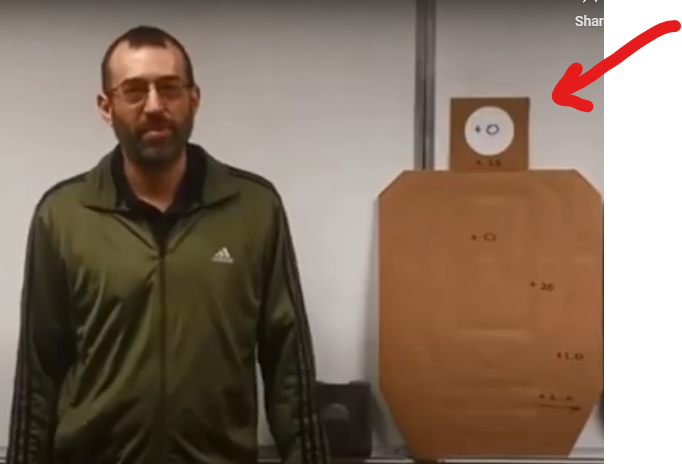
According to what I’ve heard Gabe say before, this drill is the one with the highest percentage of success for students… but it’s still not a gimme.
You can EASILY fluff this if you don’t do everything right.
Like the rest of the technical skills drills, we ran live fire iterations focusing on pushing the envelope of our performance, then some live fire backing that down into our envelope of capability, and then finally two practice runs with a shot timer as a benchmark – which do not count for score – then the final 2 runs with shot timer that were scored and recorded.
I started shooting like I was supposed to and put down two Turbo Runs. If I can read Gabe’s handwriting correctly–it was a final score of 1.61 and 1.52 clean.
That put me at 3 out of 4 Turbo Pin performances, meaning I needed one more Turbo Run to earn the pin. This was WAY better than the first day, and my draw out of the holster and draw to the first shot were finally starting to feel “right” again.
Split Bill Drill
The final drill as part of the Technical Skills Test was the Split Bill Drill:
The Split Bill Drill (four shots to the body and two shots to the head) – Turbo Pin Goal Time 2.60
Again, the head “A Zone” is the 4” circle, not the full head box…
That REALLY plays into how challenging this drill is to get right.
Essentially you need to get the gun out of the holster and get the first 4 shots done at basically a Turbo Pin level of Bill Drill speed…
But instead of all 6 shots to the body A Zone – after the 4 shots to the body, quickly transition to the head and place the final two precise shots in the 4” circle A Zone of the head.
It’s kind of like if a Bill Drill and the Failure To Stop Drill met at a bar, fell in love and had a baby drill that combined the best parts of their personalities…
Or something like that.
The point is, you definitely can’t “slow down and get your hits” because you need to blaze the 4 shots fast enough, but then be able to transition quickly enough and then calmly enough to place your 2 accurate shots in the head.
In other words, a lot can go wrong and often does!
(I believe in my practice for this class, the Split Bill Drill was my LEAST successful drill performance, followed directly after by the Failure To Stop Drill.)
In any event, Gabe explained, demo’d and shot it all before like the standard procedure – I believe by this point Gabe had already fulfilled his Turbo Pin standards himself (like I said he holds himself to the same standards each class, pretty cool) and then it was on to us’n.
So, I won’t cover Carter’s full experience here, but will say that at this point, Carter needed to smoke BOTH of his tested/scored runs on the Split Bill Drill to earn the Turbo Pin.
And during day two, because Carter and I were both on the end of the right side of the firing line, he got to go first, and then me…
I can’t even explain how nervous I was for Carter, lol, but also excited because I knew he put in a TON of training and could consistently do this in practice many times before. All he had to do was what he had trained himself to do. But this was crunch time. Long story short – he smoked both Split Bill Drills – and Gabe quickly congratulated him for being the first Turbo Pin winner of the class!
I may have been more excited than Carter as I jumped up and down like a schoolgirl and quickly turned that into the manliest Bear Hug I could muster to show my approval…
Then it was immediately my turn…
I just needed one of these to go right. Shot Timer goes off, speed is OK but I dropped too many C Zone hits. Light Pin run. That means I have one and only one final attempt or I wasted all this time and money and travel hassle, time away from my wife and kids, etc. Pressure’s on. Everybody’s watching. Shot Timer goes off, perfect grip, perfect draw, dot on target consistently bouncing on all 4 A Zone body shots then comes to rest on the head A zone two more slightly less violent dot bounces. Clean run, zero dropped shots, 2.47 final score for the 4th clean run to secure the Turbo Pin.
After Gabe double checks that the hits were all A’s – he also quickly congratulates me and I rush in for a big hug – I’m pretty effing pumped.
I quickly thank God for the answered prayers that I was constantly harassing him in Heaven with… asking him to bless the work of my hands that I had put in for so many months and hours of my life, time away from my family, etc… and it was actually a pretty emotional moment for me. More on that in a bit.
Man vs Man Shooting Drills
Man-on-Man or Man vs Man shooting drills are something that you see at good defensive shooting courses when the students have the skills to perform them.
It gives students a chance to experience a little competition stress. This is super important, because it brings in a totally different and usually unique level of stress and the necessity to perform on demand that’s not present in the normal live fire drills.
In short, most people can shoot fine on the flat range at the paper targets, but as soon as they have to do a drill in competition against another student – it can degrade their performance…
Add in the stress of a shot timer, some people lose their minds…
Throw in the stress of all your peers watching the competition, bragging rights or Instructor Trinkets as prizes… and the pressure only increases…
You get the idea.
(As an aside, if any of this makes sense to you, or you’ve taken a “tactical” class that included man-on-man shooting competitions and you agree with what I just said… but you STILL don’t think that competition shooting could improve your defensive handgun skills… then… I dunno what to say lol)
Ok, so I separated this out into its own section because I lost track of what drills happened on what days, but basically the class structure was excellently designed so that you never got bored doing any one thing for too long.
From the firearm’s trainer perspective, I’m sure Gabe intentionally does this to utilize the idea of “interleaving” in teaching people…
As a student, it’s great because both days were taught in a manner somewhat like this:
Intro a block of teaching, some lecture/demo explanation by teacher, some dry or live fire, Technical Skills Test block – high pressure and scored runs, etc – then Man-on-Man shooting Drills usually as a practical exercise of what was taught in an earlier block, back to the next block of teaching.
So what I’m saying is that throughout each day, man-on-man shooting drills were woven into and between blocks of teaching on specific concepts.
I’ll just give one example…
From the time period after the instruction block on the use of Barriers/Cover/Concealment on day two. Keep in mind this was also after the instruction blocks of shooting on the move and everything else on day one too.
All these concepts had been already taught in lecture/demo format, dry fire and live fire with static targets on the firing line…
Then Gabe has a man-on-man drill where there are two students side by side on the firing line. One student acts as the “start of the drill” by engaging a target from behind a barrier, utilizing cover and concealment and the target is also half behind a barrier (a partial target like someone sticking just their gun/face out around their barrier) – that same student then has to move laterally until he reaches cover again and engage one more target before the other student to win. That student also has the option of shooting on the move BEFORE he gets to the cover to engage the last target.
The other student has a full plate rack full of targets – but can’t start shooting until he hears the first student move/engage the first target (very similar to a defensive encounter where you might find yourself behind the power curve when someone shoves a gun in your face) and then it’s a race to see who can shoot their targets first (keeping in mind this second student’s targets–a few of them on the standard plate rack are also partially obscured, so the student will have to move to open up a proper shot.)
Ok, that all makes sense as I’m writing it, but also I know I was there and can visualize it so it may not make sense to you…
The point is, you don’t really even have to be able to visualize or understand the drill to hopefully get the value of these types of (properly) implemented Man-vs-Man shooting drills…
It gives the students a chance to get repetitions performing the skills they were introduced to in earlier teaching blocks – combined with all the other skills they’ve learned thus far – with an added benefit of performance under all the stresses of competitive events in a class environment amongst your peers.
Hopefully that makes sense!
The bottom line here is I won a bunch and lost a bunch and got a Gabe White patch to go with my Turbo Pin and they were really fun and challenging ways to get more reps and ingrain the skills taught throughout the weekend.
The Technical Skills Test
And here is Gabe demonstrating all of this drills at once at Turbo Pin standards:
I already revealed that my primary motivation for attending the Gabe White class was because I wanted to earn the Turbo Pin. This is the top level of the Technical Skills Test Gabe includes in this 2-day shooting course.
You can go directly to Gabe’s website here: https://www.gabewhitetraining.com/technical-skills-tests/ to get all the fine details, but for the sake of clarity I’ll just put the 4 drills here and the Turbo Pin scores here:
(All drills shot on USPSA Target at 7yds, standard A zone in body with 4″ circle A zone in head):
→ The Bill Drill (six shots to the body) – 2.00 par
→ Failure to Stop (two shots to the body and one shot to the head) – 1.70 par
→ Immediate Incapacitation (two shots to the head) – 2.00 par
→ The Split Bill Drill (four shots to the body and two shots to the head) – 2.60 par
At the start signal, the shooter draws and engages the target exactly as required by the drill. No extra shots are allowed. Your score is your time, with penalties added for shots outside the A/-0 zone. B/C/-1 zone hits add .25 seconds per shot. D-zone hits add 1 second per shot. Misses add 2 seconds per shot. Head shots that land in the body count as misses. Body shots that land in the head count as lucky shots and are scored. The four drills are used as practice drills and then shot for official score two times each. The highest-scoring four out of the eight total attempts count for Performance Awards. Times listed are for open-carried, non-retention gear. Concealment or duty gear (SLS+ALS minimum) gets a 0.25 second bonus (subtraction) on all drills.
Why I’m Proud of My Turbo Pin
As I also revealed earlier, I got pretty emotional when I nailed the last and final attempt to earn the Turbo Pin.
It really meant a lot to me.
I’m pretty proud of the Turbo Pin, because I really did have to work on achieving this goal and in the end I achieved it.
One of my favorite things in life to do is set a goal and WORK towards achieving it… and do it.
Often, the WORK is its own reward… learning to become processed focused with your entire mindset is a BIG secret of happiness in my humble, but accurate opinion…
But when you do actually get to achieve it, it’s so much sweeter.
I guess I got so emotional and it meant so much to me and I said so many prayers and thanked God so many times after achieving it because it really ended up being a great challenge…
Sure, I had done it plenty of times in practice before all by myself on the range.
But for the class, everything from the weather… to my less than ideal training schedule ahead of time… to the small things that can go wrong in any shooting performance… It was difficult for me and that makes me proud.
I still have a ton of other shooting goals and levels of performance that I am striving towards, but this was a big one and I’m really grateful I was able to do it.
The fact is, I DID fall short of my ultimate goal as it applies to this particular Technical Skills Test – and that is I’d like to be able to drive my “on demand” performance in these skills to the level where I can clean all 8 attempts with solid Turbo Pin runs, every single time I try it.
It’s noteworthy that until this month, only one person has gotten all 8 out of 8 runs in Gabe’s class, that is Donovan Moore of Point 1 Tactics and then I was just told as I was writing this review that Matt Rakestraw got all 8 out of 8 runs too! I’ve never met Donovan, but I have met Matt who was also in the final “shoot offs” of the Tac Con 2024 Pistol Match with me, Jeff and Carter this year. Matt is a great dude, and I’m happy to see him continually push the envelope and achieve something so noteworthy!
All that said, about 30 something other people have won a Turbo Pin, so it’s not the MOST incredible thing in the world. And I only got 4 out of 8 Turbo Pin runs, not a perfect 8/8 score… So, I’ll summarize with the words of the great philosopher Billy Madison, ”… it was tough for me, SO BACK OFF!”
As a further side note and something cool about the Turbo Pin award, you get to choose your “spirit animal” of sorts, because Gabe has 5 different Turbo Pin animals that you can choose if you win it. It’s three cats, a Leopard, a Tiger, or a Snow Leopard. An Alligator and an Elephant. When Jeff won his Turbo Pin, he chose the Snow Leopard. Carter chose the Tiger…
I chose the Alligator.
Why?
Because Gator don’t play!
How This Class Was Different Than Any Other Pistol Class I’ve Taken
As I’ve said numerous times…
I thought this class would be just one thing, focused on a lot of flat range, firing line, performance shooting from concealment focused on honing the skills necessary to pass the Technical Skills Test…
But it was way, WAY more.
I think innovative is the best word to describe what Gabe has put together with this Pistol Shooting Solutions class.
He’s really drawing from so many different source materials, his own training, his own growth as a shooter, his own study of different martial disciplines, from tactical training, competition shooting (my man Gabe is even out here quoting Sun Tzu’s Art of War and Bruce Lee’s Dao of Jeet Kune Do during lectures!)–and creating a very, very unique 2-day class that’s unlike anything else I’ve experienced.
NOW,I totally get why Jeff told me that “taking the class just to get the Turbo Pin is the wrong motivation” because it’s way more than that.
This actually ended up being one of the most “tactical” courses I’ve ever taken…
I don’t know if Gabe was THE first guy to offer a performance-oriented goals challenge like this to defensive minded practitioners, but he was certainly one of the first to do it…
(These days practically every “big name” traveling tactical instructor type has their own “Standards” with associated awards of some type… which should really be called goals/challenges because I’m sure they can’t always meet their own “standards” 100% of the time… but that’s a topic for another day)
I know that the late Todd Green of pistol-training had the FAST Coin challenge, and I also know that taking Earnest Langdon’s class WAY back in the day was about the only other class that approaches this blend of having a very challenging goal associated with the class – while also teaching an incredibly valuable “tactical” class.
As a final note here…
There actually aren’t many shooting classes I’ve taken where the instructors give out a detailed handout or take home materials…
This is actually one of the things we pride ourselves at Patriot Training Center, because in every one of our Patriot level fundamental courses, we provide a student manual that’s really a 100+ page book that goes in-depth on all the topics taught during the class. This both serves as an easy way for students to not have to take notes, but also as a great way for “refresher” training as they take the manuals home with them and can and absorb the same information – some of it greatly expanded – that was taught in a different modality in the live training.
For example, a student might experience a PowerPoint based classroom presentation on Firearms Safety, a verbal and physical demo of Firearms Safety later in the day on the range, then in the manual a multiple page written explanation greatly expanding on the Firearms Safety they were taught in class. This is great for adult learning because not everyone has the same learning modality and/or getting the same information in multiple different “formats” helps retention.
As I mentioned before, Gabe provides a REALLY great pre-written set of notes for you to take home after class, so you don’t have to take notes during class, that is SUPER thorough. It’s 12 pages long and is a wonderful added benefit.
Gabe’s Lecture on Mindset Was One of the BEST I’ve Ever Heard!
Towards the end of the class, Gabe gave a lecture on his mindset and philosophy that was honestly one of the best I’ve ever heard.
In the “tactical” community the phrase “mindset” gets thrown around a lot…
But this talk was great.
I’m including a video here that I actually randomly found on Youtube before I attended the class that captures just a portion of this excellent lecture from Gabe, but to hear it in person is truly something else.
What I Did NOT Like About The Class
As you can tell, I’m really praising Gabe’s class…
For plenty of good aforementioned reasons.
So, I’ll also try to be as objective and biased as possible to try and find something I did NOT like about the class.
Honestly, it’s pretty hard, because I was more than pleased and felt I got my money’s worth.
That said, during the first day, I think it was right before we got to the first Technical Skills Test with the Bill Drill that I found myself thinking “We are not doing much shooting!”
I actually had it in my head that the class was moving a little too slow and we weren’t yet getting enough trigger time…
In retrospect, I believe this is because:
- I was anxiously awaiting the first challenging drill – the Bill Drill – and wanted to do good on it, so I wanted to shoot more to prepare…
- I was still operating off the pre-conceived notion of how I THOUGHT the class was going to go and what it was going to be about (lots of shooting)
As soon as I basically realized, “Wow this is going to be about WAY more than just performance shooting from concealment” I really dropped into the present moment and of course it all worked out just fine.
It’s obvious Gabe’s class was great and he’s performed it 100’s of times, refining it along the way to the polished version it is now.
So basically, I don’t have any complaints about the class and didn’t dislike anything.
Sorry!
Better weather would have been nice, but that’s obviously not under our control in any way (and it only adds to the legend of this class for me).
The Bottom Line
If anyone in the future ever asks me what was one of the best classes I’ve taken for the defensive-minded pistol shooter, I’d immediately say “Gabe White’s Pistol Shooting Solutions”.
Like I said, I think it really stands alone as a very innovative blend of performance shooting and tactical teaching geared towards realistic self-defense with a concealed handgun that I’ve not seen anywhere else.
I’d definitely recommend it to anyone that’s “ready” for the class.
By “ready”, I would definitely look at Gabe’s website and make sure you can meet the minimum performance standards he outlines for the ideal student…
This is definitely NOT the class to take for your very first handgun class, because there’s not an in-depth presentation of what most people would call the “fundamentals” of shooting…
Remember, from the stuff on drawing from the holster, shooting mechanics, aiming, trigger, grip/stance/platform, etc – all that is taught within the context of the student having already been trained/exposed to this with at least a solid grasp, and here’s how we can make it better.
I got a pre-class flyer after signing up and I think it puts it perfectly too:
“You already have the basics of shooting and gunhandling – you can load, unload, and draw from a”holster safely, you have proper muzzle and trigger finger discipline, shoot reasonably accurately, you can keep your gun running by reloading and clearing malfunctions, and maybe have the basics of use of cover down.
What do you do next to improve your capability to solve problems where the handgun is an appropriate solution? It’s time to improve your ability to deploy the handgun better, shoot it better, and navigate movement, cover, and the presence of bystanders better. It’s time for Pistol Shooting Solutions.”
To find more information about Gabe White go to his website https://www.gabewhitetraining.com/. In 2024, he’s not like most “traveling trainers” in that he doesn’t have a very big Social Media presence. He does have a Youtube https://www.youtube.com/@gabewhite2236 and if you search around YouTube you can find more videos of Gabe teaching and whatnot which are where many of the videos from today’s post came from.

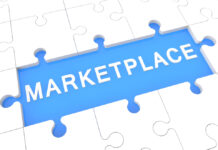


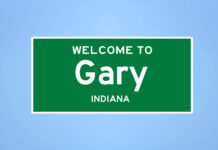
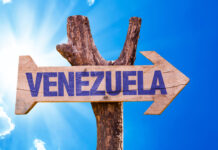

![Are Compensators Worth It? [Video]](https://preparedgunowners.com/wp-content/uploads/2025/07/Depositphotos_815431992_S-218x150.jpg)



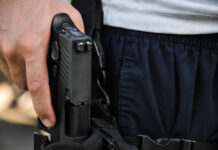
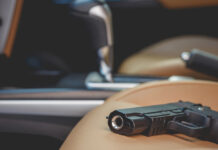
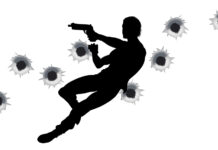

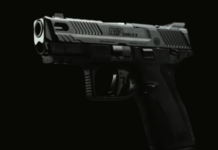

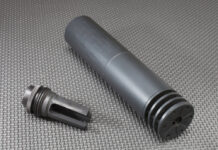


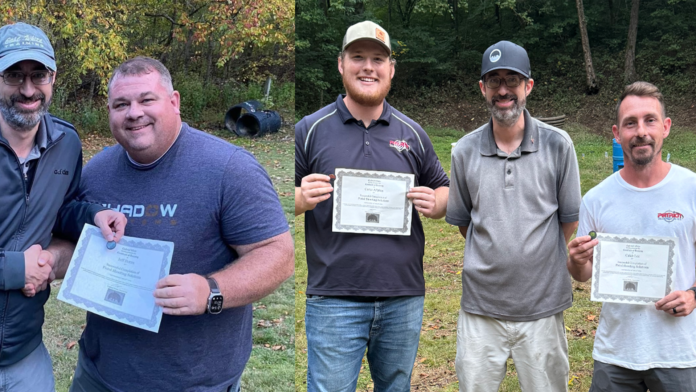
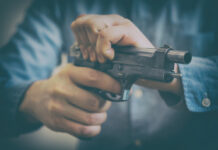






![How Newsom LIES About Guns To Push His Agenda [Video]](https://preparedgunowners.com/wp-content/uploads/2023/09/Screenshot-2023-09-12-3.13.34-AM-100x70.png)





![Optic Ready vs Milled slides? [Video]](https://preparedgunowners.com/wp-content/uploads/2024/02/image-3-100x70.png)
![[Checklist] What Gear You Need To Take Pistol, Rifle & Shotgun Training Courses [Video]](https://preparedgunowners.com/wp-content/uploads/2023/07/Depositphotos_275087632_L-100x70.jpg)
![What is in Carter’s 2023 EDC? [Video]](https://preparedgunowners.com/wp-content/uploads/2023/07/Depositphotos_146856137_L-100x70.jpg)


